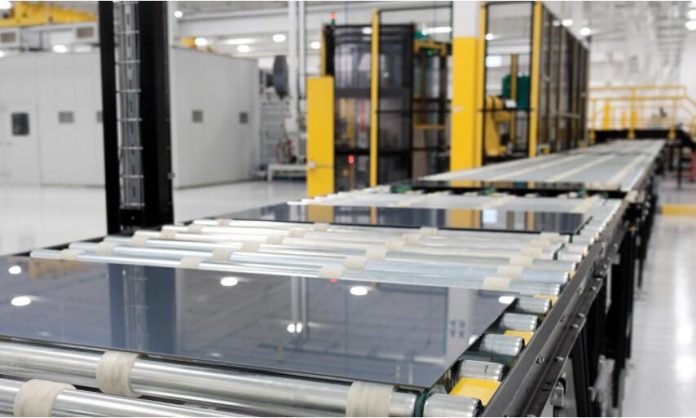A secure transition to net zero emissions globally will require countries to diversify and expand the production of solar modules, whose supply chains are heavily concentrated in China, according to new research from the International Energy Agency (IEA).
The study said that with global solar deployment needing to grow at an unprecedented scale, this will demand a “major additional expansion in manufacturing capacity”, raising concerns about the world’s ability to rapidly develop resilient supply chains.
Having invested ten times more than Europe in new PV supply capacity since 2011, China’s share in all PV module manufacturing stages – polysilicon, ingots, wafers, cells and modules – exceeds 80%, found the research, the first of its kind carried out by the IEA.
Entitled ‘Special Report on Solar PV Global Supply Chains’, the research revealed the world will almost completely rely on China for the supply of key building blocks for solar panel production by 2025, with the country’s share of global polysilicon, ingot and wafer production expected to soon reach almost 95%.
“We believe this level of concentration in any global supply chain would represent a significant vulnerability,” Fatih Birol, executive director at the IEA, said during a press webinar this morning. “It is a must, in my view, to diversify. Otherwise, we may see major challenges in the days, months and years ahead.”
China is the most cost-competitive location to manufacture all components of the solar PV supply chain, according to the IEA, with costs in the country 10% lower than in India, 20% lower than in the US and 35% lower than in Europe. This is explained by large variations in energy, labour, investment and overhead costs.
In the absence of financial incentives and manufacturing support, the bankability of manufacturing projects outside of panel assembly “remains limited outside of China and few countries in Southeast Asia”, the report reads.
“Governments need to put together targeted policy efforts. And here, of course, a key issue is how to bring the cost down to attract the investment,” Birol said. He called for countries to introduce “creative policies”, such as providing manufacturing tax incentives or support to set up production plants in industrial clusters to reduce land costs.
The IEA noted that governments around the world have begun to pay increasing attention to solar PV’s manufacturing supply chains as high commodity prices and supply chain bottlenecks have led to a price increase of around 20% for solar panels over the last year alongside delayed deliveries.
Silver shortages could be a headwind facing the industry in the future, the study said, with demand for the metal in solar PV manufacturing in 2030 potentially exceeding 30% of total global silver production in 2020, up from about 10% today. This rapid growth, combined with long lead times for mining projects, increases the risk of supply and demand mismatches, which can lead to cost increases.
To be on track with the IEA’s pathway of reaching net zero emissions by 2050, the agency said global production capacity for polysilicon, ingots, wafers, cells and modules would need to more than double by 2030 and existing production facilities would need to be modernised.
Although innovation led by China has halved the emissions intensity of solar PV manufacturing since 2011, absolute carbon dioxide emissions from solar PV manufacturing have almost quadrupled worldwide as production has expanded in the country, according to the study.
The IEA revealed that coal generates more than 60% of the electricity used for global solar PV manufacturing, significantly more than its share in global power generation (36%). This is largely because PV production is concentrated in China – mainly in the provinces of Xinjiang and Jiangsu where coal accounts for more than 75% of the power supply.
‘Diversification is a must’: IEA warns on China’s growing dominance of solar PV supply chain
A PV production plant from First Solar.
Source:PVTECH
ViaJules Scully






